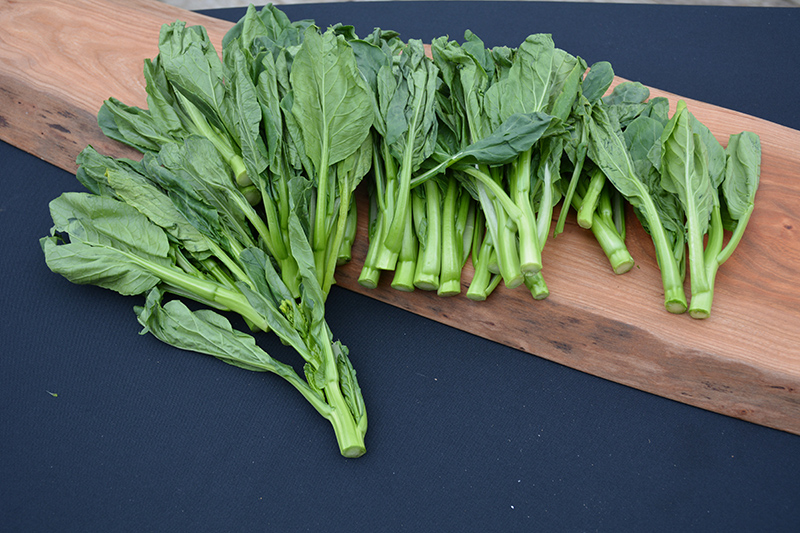Plant Finder
Height: 20 inches
Spacing: 14 inches
Sunlight:
![]()
Hardiness Zone: (annual)
Other Names: Kai-lan, Chinese Broccoli, Chinese Kale
Description:
A wonderful variety that is easy to grow in containers and gardens; produces thick and flat, glossy blue green leaves with thick stems and small florets; slightly bitter and delicious, great for stir-fry, sautéing or steaming; harvest before flowers open
Edible Qualities
Gai Lan is an annual vegetable plant that is typically grown for its edible qualities. The entire above-ground parts of the plant are edible, and are usually harvested from mid summer to late fall. The edible parts have a bitter taste and a crisp texture.
The plant is most often used in the following ways:
- Eating When Cooked/Prepared
- Cooking
- Baking
Planting & Growing
Gai Lan will grow to be about 20 inches tall at maturity, with a spread of 12 inches. When planted in rows, individual plants should be spaced approximately 14 inches apart. This fast-growing vegetable plant is an annual, which means that it will grow for one season in your garden and then die after producing a crop.
This plant is typically grown in a designated vegetable garden. It should only be grown in full sunlight. It does best in average to evenly moist conditions, but will not tolerate standing water. It is not particular as to soil pH, but grows best in rich soils. It is somewhat tolerant of urban pollution. Consider applying a thick mulch around the root zone over the growing season to conserve soil moisture. This species is not originally from North America, and it is considered by many to be an heirloom plant.
Gai Lan is a good choice for the vegetable garden, but it is also well-suited for use in outdoor pots and containers. With its upright habit of growth, it is best suited for use as a 'thriller' in the 'spiller-thriller-filler' container combination; plant it near the center of the pot, surrounded by smaller plants and those that spill over the edges. Note that when growing plants in outdoor containers and baskets, they may require more frequent waterings than they would in the yard or garden.





